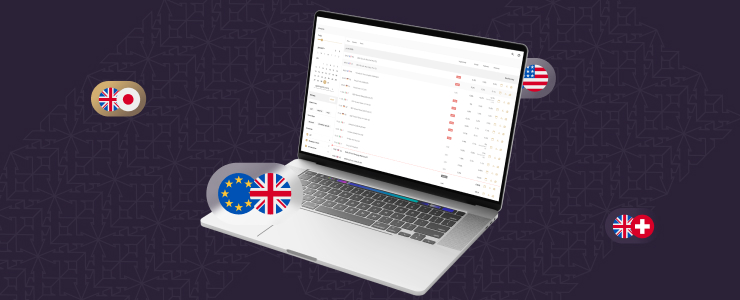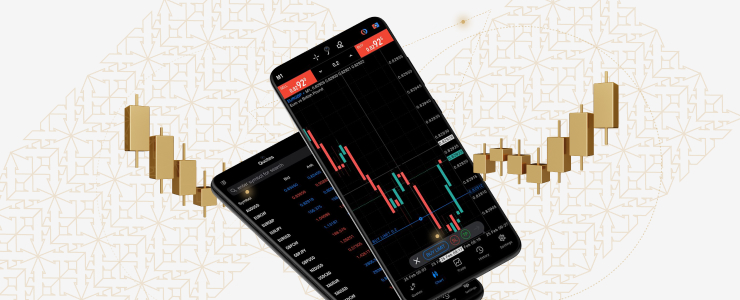The foreign exchange market works 24/5, and currencies are exchanged all the time across time zones globally. While this continuous activity offers various opportunities, it also introduces risk and volatility. Therefore, being a trader in this fast-paced and dynamic environment, you will need powerful tools to improve your trading decisions and go through various fluctuations. One of these tools is the economic calendar.
Being aware of when economic reports, decisions from the central bank or geopolitical events will happen can help you trade with more confidence and precision.
Whether you are new to this industry or looking to enhance your trading strategy, learning how to use tools like the economic calendar properly can give you a competitive edge in the markets.
Read on to explore what an economic calendar is, how to read it, and implement it in your trading strategy.
What is an economic calendar?
An economic calendar refers to a real-time public schedule of upcoming macroeconomic events that can affect the financial markets, especially forex. These include GDP reports, inflation data, political developments, monetary policy statements, jobs figures, central bank interest-rate decisions, manufacturing and services PMIs and others.
All these events are listed by date, time, country and currency, previous and expected values. Many economic calendars also have an impact rating, which indicates how much volatility is expected to be caused by an event. These are usually shown with colour codes based on impact level.

Why does an economic calendar matter to forex traders?
Company performance strongly influences stock prices. However, macroeconomic factors dominate the forex market. Each currency reflects the health of its nation’s economy. Therefore, even minor economic changes can affect demand as well as price direction.
For example, a strong US employment report usually strengthens the USD, while poor inflation figures in the eurozone may weaken the EUR. If you recognize these events ahead of time, you can prepare for potential market reactions and decide whether to enter a position, exit one, or stay out during periods of high volatility.
With an economic calendar you might anticipate price volatility, understand the content around movement in prices, plan your trades around key events, avoid sudden slippage or jumps as well as combine fundamental insights with technical setups.
Steps to read an economic calendar
Different brokers may present their economic calendar in a different way. Nevertheless, the main elements are largely the same. Here’s a step-by-step guide on how to read an economic calendar:
Date & time
Each event on the calendar is listed based on its expected time of release. You will need to change your local time zone so that you don’t miss important events.
Currency & country
The currency involved tells you which forex pairs might be most affected. For example, a UK inflation report will impact GBP pairs such as GBP/USD or GBP/JPY.
Name of event
This field refers to the things being released like the ECB interest rate decision, or US nonfarm payrolls. Knowing which event matters will help you expect its potential impact.
Level of impact
A lot of calendars make use of coloured dots, bars or star ratings to show the volatility expected. Traders usually overlook low-impact events because they cause little to no movement in price.A medium-impact event may affect prices, especially if results deviate from expectations.
Previous, forecast & actual
These three values are important for interpreting economic data. The first one represents the result from the last release. The Actual shows the number released at the time of the event, while the Forecast reflects what analysts expect for the current release.
Traders usually compare the Actual result with the Forecast to evaluate the market’s reaction. If the result is stronger than expected, the currency might strengthen whereas if it falls short, the currency might weaken.

How to use an economic calendar
There is not just one correct way to trade around economic data. How you approach it will depend on your level of experience, trading style and risk appetite. However, below are some effective methods to use an economic calendar in your trading strategy.
Plan ahead
Start your week by reviewing the economic calendar. Focus on high-impact events for the currencies you are planning to trade. If there is a US release of CPI data on Wednesday, let’s say, you should consider how this could affect the USD currency pairs.
Filter for relevance
As already mentioned, most calendars enable filtering events by country, currency or impact level. Keep track of data that impacts the pairs you trade so that you avoid information overload.
Use volatility wisely
There are some traders who try to avoid during periods of key announcements. Some others try to capitalise on volatility through breakout or news-based strategies. There’s no one-size-fits-all approach. You will just need to have and follow a solid trading plan.
Combine with technical analysis
Key news releases usually trigger price patterns that form on the charts. When a pair moves toward a key resistance level and a high-impact economic event is coming up, the announcement can drive the market past that level.
Example of an economic calendar
Let’s say it’s Friday and the US Nonfarm Payrolls (NFP) report is about to come out. The EUR/USD, which you were looking at, has shown limited movement during the week. The economic calendar shows the actual Event, which is the US NFP, the Forecast which is +190,000 and the Previous which is +200,000 jobs.
You are planning two scenarios. The first one says that if the actual number is a lot higher than forecast, it could signal a stronger US economy, leading to USD strengthening and EUR/USD potentially dropping.
On the other hand, if the data disappoints, falling below expectations, USD could weaken, causing EUR/USD to move upwards. In such a case, you might want to wait for a breakout above a key resistance level before entering a long position.
Using this approach, that is, combining macroeconomic data with chart patterns helps you avoid impulsive trades and improve your decision-making.

Integrating the economic calendar in your strategy
The economic calendar is not just for fundamental traders. It is a tool used around the globe to help forex traders of all levels of experience stay informed. Below is an easy routine to follow:
Check your calendar every day. Filter by impact level and currency.
Mark key events in your planner or set alerts.
Review your charts to understand whether the market is already reacting to the expected news or data.
Set realistic goals and try not to catch every move.
Log your trades and see how your strategy performs during data releases.
Final thoughts
In forex trading, information is key. The economic calendar gives traders a clear view of what is coming, keeping them ahead of a market that moves on data. Whether you are waiting for a breakout or choosing to not enter a position, an economic calendar helps you stay one step ahead. That is why making it part of your daily trading routine is vital. It helps you trade with more confidence, clarity, and control.
Disclaimer:This information is not considered investment advice or an investment recommendation, but instead a marketing communication.




